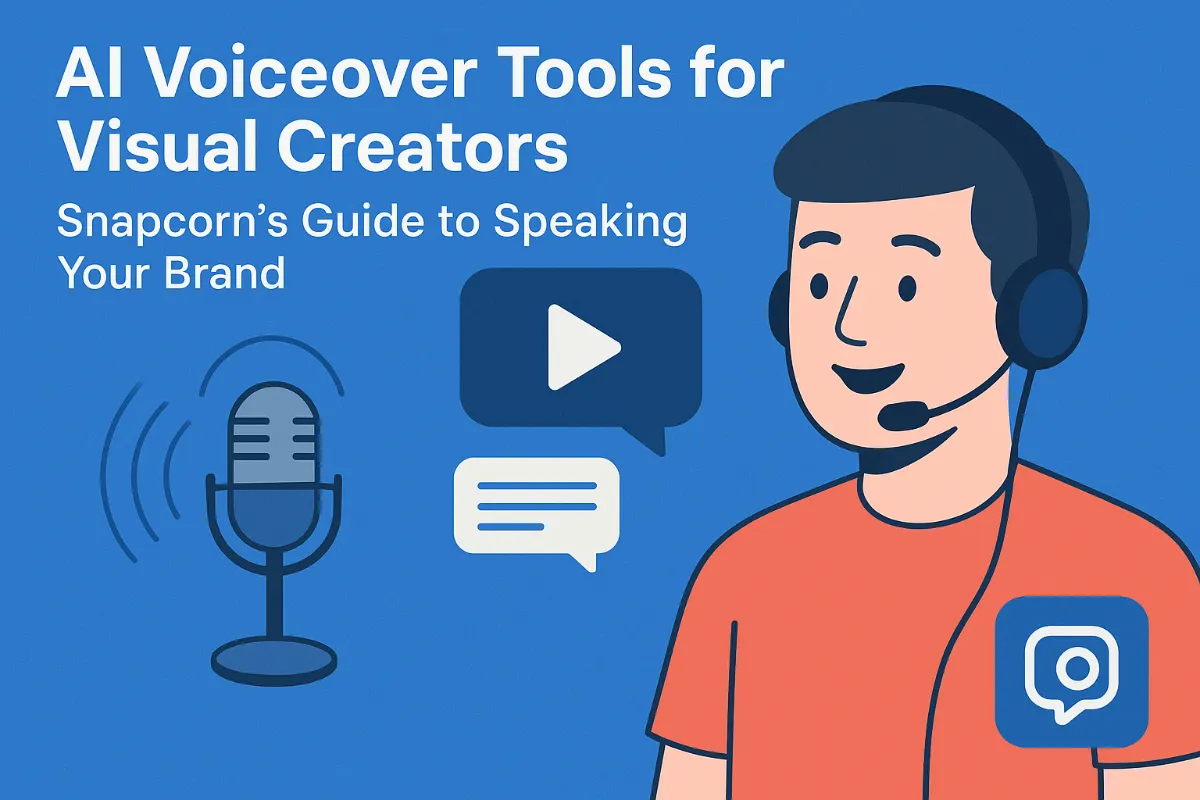Navigating the Ethical Minefield of AI Photo Manipulation: A Guide for Photographers
The Rise of AI in Photography: A Double-Edged Sword
ai photo editing is changing the game, but is it all fair play? The rise of these tools presents exciting possibilities and some serious ethical challenges for photographers.
ai tools now offer a range of capabilities, including image enhancement, restoration, and even complete manipulation. These tools are also becoming more accessible and easier to use, meaning anyone can alter a photo with just a few clicks. This ease of use blurs the line between simple enhancement and outright manipulation, raising important questions about authenticity Ethical Considerations in AI Photography.
- Enhancement: Improving image quality, like sharpening focus or adjusting colors.
- Restoration: Recovering old or damaged photos, such as removing scratches or fixing discoloration.
- Manipulation: Altering the content of an image, like adding or removing objects.
ai manipulation has the power to distort reality and erode trust in visual media. This raises concerns about the potential for misuse, especially in creating misleading or deceptive images. For instance, ai could be used to generate fake news images, making it difficult to discern truth from fiction. Imagine a politician appearing to say something they never did, or a natural disaster being fabricated. These scenarios, while extreme, highlight the erosion of trust that can occur when visual evidence becomes unreliable. It's becoming increasingly important to critically evaluate ai-enhanced photos and question what's real.
The use of ai in creating images also raises questions about copyright. For example, ai models are often trained on copyrighted images without proper credit or permission, though some stock image companies have started training their models only on licensed images (Part 3: Generative AI Training pre-publication version) Research Guides: Artificial Intelligence and Images: AI Image Ethical & Legal Issues.
The rise of ai in photography presents both opportunities and risks. As we move forward, it's important to consider the ethical implications of these powerful tools. Next, we'll examine how ai manipulation can impact authenticity and trust in the field of photography.
Transparency and Disclosure: The Cornerstone of Ethical AI Use
In the world of ai photo editing, the line between enhancement and manipulation is becoming increasingly blurred. How can photographers navigate this evolving landscape while maintaining their ethical responsibilities?
Transparency is crucial for building trust with your audience. When you're upfront about using ai, you show respect for your viewers and maintain your artistic integrity 4 Ethical Considerations When Photo Editing With AI. This means clearly indicating when ai has been used to alter an image beyond simple adjustments.
- Building trust: Audiences appreciate honesty. If you enhance a portrait with ai, let your followers know. This way, they understand what they're seeing is an enhanced version, not necessarily reality.
- Avoiding misrepresentation: Imagine a real estate company using ai to add features to a property photo that don't exist, like a swimming pool that isn't there. This is a clear misrepresentation. Transparency ensures you're not misleading potential customers.
- Responsibility of brands and influencers: Brands and influencers have a significant impact on their audience. Being transparent about ai use in their images helps set realistic expectations. Soraiya Merali from Linx Productions highlights the importance of declaring ai enhancements to avoid misrepresentation.
Disclosing ai use doesn't have to be complicated. Small steps can make a big difference in maintaining ethical standards.
- Labeling ai-manipulated images: Use clear labels like "#AIedited" or "#AIenhanced" on your social media posts. This simple step informs your audience at a glance.
- Educating your audience: Share blog posts or videos explaining the ai tools you use. Explain how these tools work and what they can and can't do.
- Being upfront about ai involvement: If you enter an ai-assisted photo in a contest, be open about the extent of ai's role in creating the image.
The World Press Photo contest now excludes photographs created by ai, allowing its use only for minor adjustments that do not modify the essence of the original image AI image generation and ethical considerations - Torresburriel Estudio - Medium.
By embracing transparency and taking these practical steps, photographers can navigate the ethical challenges of ai with integrity. Next, we'll delve into how ai impacts authenticity in photography and how to maintain genuine connections with your audience.
Addressing Bias and Promoting Inclusion in AI Photography
Can ai truly reflect the world's diversity, or does it merely amplify existing biases? The answer lies in how we address bias and promote inclusion in ai photography.
ai algorithms can inadvertently perpetuate and amplify societal biases present in their training data 4 Ethical Considerations When Photo Editing With AI. This can lead to skewed outputs that misrepresent certain demographics. These biases, while often unintentional, have far-reaching implications.
- Skewed representation: If an ai is trained primarily on images of one race, it may struggle to accurately depict other races. For example, ai-generated portraits might lighten skin tones or alter facial features to conform to a perceived "ideal." This can lead to a lack of representation for many.
- Reinforcing stereotypes: ai can also reinforce harmful stereotypes. If an ai is asked to generate an image of a "scientist," it may overwhelmingly produce images of men in lab coats, excluding women and other underrepresented groups. This perpetuates outdated notions about who belongs in certain professions.
- Limited diversity: ai trained on limited datasets may struggle to represent diverse body types, ages, or abilities accurately.
Addressing ai bias requires a multifaceted approach. Photographers and developers must work together to ensure ai tools reflect the world's rich diversity.
- Critically assess ai tools: Choose ai tools designed with inclusivity in mind. Look for tools that use diverse datasets and offer options to adjust parameters related to race, gender, and other demographics.
- Provide feedback to developers: Share your experiences and concerns with ai software developers. Your feedback can help them improve their algorithms and create more inclusive tools. Nurzeatul Hamimah Abdul Hamid, a senior lecturer at Universiti Teknologi Mara, urges ai developers to prioritize inclusivity and diversity in their design requirements AI photo manipulation raises ethical concerns - Expert warns | Sinar Daily. She emphasizes the need for developers to actively seek out and incorporate diverse data to prevent the perpetuation of harmful stereotypes.
- Actively counter stereotypes: Use ai tools to challenge stereotypes and promote diverse representation in your work. For example, create images that showcase women in STEM fields, people of color in leadership positions, or individuals with disabilities in everyday settings.
By understanding ai bias and actively working to mitigate it, photographers can use these tools to promote a more inclusive and representative visual world. Ensuring that ai tools celebrate, rather than diminish, our collective diversity is paramount 4 Ethical Considerations When Photo Editing With AI.
Next, we'll delve into how ai impacts authenticity in photography and how to maintain genuine connections with your audience.
Copyright and Ownership in the Age of AI-Generated Images
Can ai-generated images truly be "original," or are they simply remixes of existing work? The rise of ai in photography forces photographers to confront complex issues of copyright and ownership.
One of the most pressing questions is: who owns the copyright to ai-generated images? Is it the ai developer, the user who prompts the image, or does no one truly hold the rights?
- The legal landscape is still evolving, and there's no clear consensus. Some platforms grant users ownership rights to images they generate, while others retain certain rights AI image generation and ethical considerations - Torresburriel Estudio - Medium.
- ai models are trained on vast datasets, often including copyrighted images. This raises concerns about whether ai-generated images are simply derivative works, potentially infringing on existing copyrights.
- For example, an ai might generate an image that closely resembles a copyrighted photograph, even if unintentionally. This could lead to legal challenges for the user.
Navigating the copyright minefield requires a proactive and ethical approach. Photographers must respect original creators and stay informed about evolving regulations.
- When using ai tools, photographers should make an effort to understand where the ai sources its content. If the ai tool uses copyrighted material, ensure you have the necessary permissions or licenses.
- Keep up-to-date with the latest copyright laws and regulations regarding ai-generated content. The legal landscape is rapidly changing, so staying informed is crucial.
- Use ai tools responsibly and avoid creating content that infringes on existing copyrights. If you're unsure about the copyright status of an image, err on the side of caution and seek legal advice.
- As Nurzeatul Hamimah Abdul Hamid, a senior lecturer at Universiti Teknologi Mara, urges, transparency and inclusivity in algorithm design are essential AI photo manipulation raises ethical concerns - Expert warns | Sinar Daily. This means developers should be open about the data used to train their models and strive to create algorithms that don't inadvertently replicate existing copyrighted works.
Consider a graphic designer using ai to create marketing materials for a client. The designer must ensure that the ai-generated images do not infringe on any existing copyrights. They could use ai tools trained on royalty-free images or obtain licenses for any copyrighted material used by the ai.
As ai continues to evolve, photographers must navigate these complex copyright issues with diligence and ethical awareness. Next, we'll explore how ai impacts authenticity in photography and how to maintain genuine connections with your audience.
AI and Privacy: Protecting Individuals in the Digital Age
Is your privacy at risk when ai gets behind the camera? The rise of ai photo manipulation introduces new privacy concerns that photographers must address.
ai tools can analyze facial expressions and reveal personal information, raising significant privacy concerns 4 Ethical Considerations When Photo Editing With AI. This data, gathered from a series of photos, can expose an individual’s emotions and state of mind without their explicit consent.
- Facial recognition creates databases of individuals without their knowledge 4 Ethical Considerations When Photo Editing With AI. This can be used for surveillance or to track individuals without their consent.
- Misleading images can be generated using ai tools, potentially harming individuals by placing them in inappropriate scenarios. For example, an ai could create a deepfake video of someone engaging in illegal activities, damaging their reputation.
- Explicit consent is vital when using ai tools that collect and analyze personal data, ensuring individuals are aware of how their information is used.
For example, ai could be used to create a fake image of someone at a protest, leading to potential legal or social repercussions. This highlights the need for caution and ethical considerations when using these powerful tools.
To navigate these challenges, photographers must adopt a privacy-conscious approach when using ai. By implementing data protection measures and adhering to privacy laws, photographers can safeguard personal information.
- Be mindful of the privacy implications of ai tools, understanding the potential risks and limitations.
- Implement data protection measures to secure personal information, such as anonymization and encryption techniques.
- Adhere to privacy laws and regulations, such as GDPR, when using ai in photography, ensuring compliance and respect for individual rights.
As Nurzeatul Hamimah Abdul Hamid, a senior lecturer at Universiti Teknologi Mara, emphasizes, users need to be informed about the original sources of ai-generated outputs AI photo manipulation raises ethical concerns - Expert warns | Sinar Daily. Transparency and education are key to responsible ai use.
Here's a simplified example of how to anonymize facial data using Python:
import cv2
import numpy as np
def anonymize_face(image_path):
img = cv2.imread(image_path)
if img is None:
print("Error: Could not load image.")
return None
# Load pre-trained face detection model
face_cascade = cv2.CascadeClassifier(cv2.data.haarcascades + 'haarcascade_frontalface_default.xml')
gray = cv2.cvtColor(img, cv2.COLOR_BGR2GRAY)
faces = face_cascade.detectMultiScale(gray, scaleFactor=1.1, minNeighbors=5, minSize=(30, 30))
for (x, y, w, h) in faces:
# Blur the detected face
face_roi = img[y:y+h, x:x+w]
blurred_face = cv2.GaussianBlur(face_roi, (99, 99), 30)
img[y:y+h, x:x+w] = blurred_face
return img
Example usage:
image_path = "path/to/image.jpg" # Replace with your image path
anonymized_image = anonymize_face(image_path)
if anonymized_image is not None:
cv2.imwrite("path/to/anonymized_image.jpg", anonymized_image) # Replace with desired output path
print("Face anonymization complete.")
Photographers must understand ai’s impacts and uphold integrity while integrating new tools, as noted earlier Ethical Considerations in AI Photography.
By prioritizing privacy and consent, photographers can harness the power of ai while protecting individuals in the digital age. Next, we'll explore how ai impacts authenticity in photography and how to maintain genuine connections with your audience.
Snapcorn: Enhancing Your Photography Ethically with AI
Ready to take your photography to the next level? ai tools can help, but it's important to use them responsibly.
Snapcorn offers a suite of ai-powered tools designed to enhance your photography while upholding ethical standards. These tools include:
- Background Remover: Instantly remove backgrounds from your photos, isolating subjects for creative compositions. For example, a portrait photographer could use this to quickly place a subject against various backdrops for client previews, ensuring transparency by clearly showing the original subject and the composited background.
- Image Upscaler: Increase image resolution without losing quality, perfect for printing or displaying on high-resolution screens. This benefits e-commerce businesses needing high-quality product images for their websites, maintaining integrity by ensuring the product is accurately represented.
- Image Colorizer: Breathe new life into black and white photos by adding realistic colors. Historians and archivists could use this to enhance and preserve historical images, being transparent about the fact that the colors are ai-generated interpretations.
- Image Restoration: Repair old or damaged photos, removing scratches and imperfections. Families can restore precious memories, preserving them for future generations, with transparency about the restoration process.
These tools empower photographers to enhance their work efficiently. By using these responsibly, you ensure your creative process remains ethical.
Transparency is key. If you use Snapcorn's ai tools to significantly alter an image, disclose this to your audience. As 4 Ethical Considerations When Photo Editing With AI notes, transparency builds trust and maintains artistic integrity. For instance, when using the Background Remover, it's good practice to mention that the background was digitally added.
Also, be mindful of bias. ai models are trained on data. It's crucial to critically assess ai tools. For example, when using the Image Colorizer, be aware that the ai might interpret colors based on common associations, and you might need to adjust them to accurately reflect the original scene if possible.
Snapcorn's platform is free and requires no signup. This accessibility empowers photographers of all levels to experiment with ai-driven image enhancement. By making these tools readily available, Snapcorn encourages creative exploration while promoting responsible ai use.
Remember, ai should enhance your vision, not replace it. Embrace the possibilities of ai-driven image enhancement while remaining transparent and responsible in your creative process.
By using Snapcorn's tools ethically, you can elevate your images without compromising authenticity or privacy. Next, we'll discuss how ai impacts authenticity in photography and how to maintain genuine connections with your audience.
The Future of Ethical AI Photography: A Call to Action
ai's role in photography is still evolving, but one thing is clear: photographers hold the power to shape its ethical path. How can you ensure ai enhances your work responsibly?
Take the lead: Photographers guide the ethical use of ai. Stay informed about the newest ai developments to understand their implications fully. This means reading articles, attending webinars, and engaging in discussions about ai in photography.
Advocate for standards: Push for industry guidelines. These guidelines should tackle concerns like transparency, bias, and copyright, ensuring responsible ai use. For example, photographers could collectively call for clear labeling standards for ai-generated content or advocate for ai developers to be more transparent about their training data.
Open dialogue: Discuss ai's ethical implications with fellow photographers. Share experiences and insights to promote ethical practices within the community. This could involve informal chats, forum discussions, or even dedicated workshops.
Collaborate widely: Work with developers and policymakers. Together, create a future where ai photography is both innovative and ethical. This might involve photographers providing feedback on ai tool development or participating in policy discussions about ai regulation. For instance, photographers could collaborate with ai companies to develop tools that are inherently more transparent and less prone to bias.
Engaging in these practices ensures photographers stay at the forefront of responsible innovation. By actively shaping the conversation, you help build a future where ai enhances, rather than compromises, the integrity of photography.




